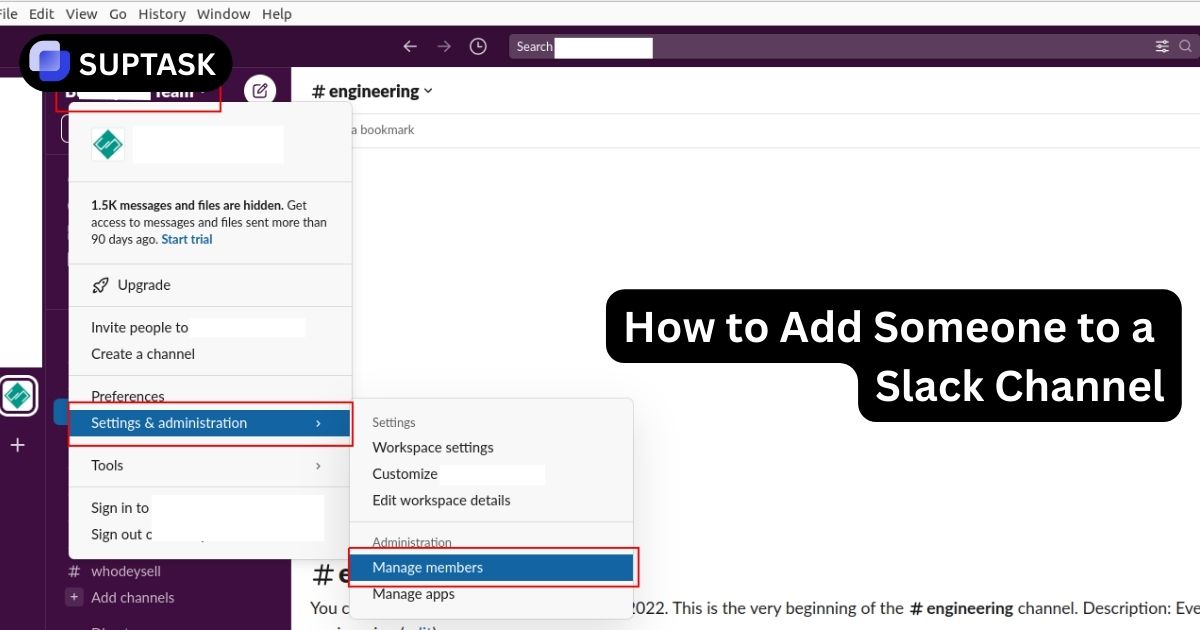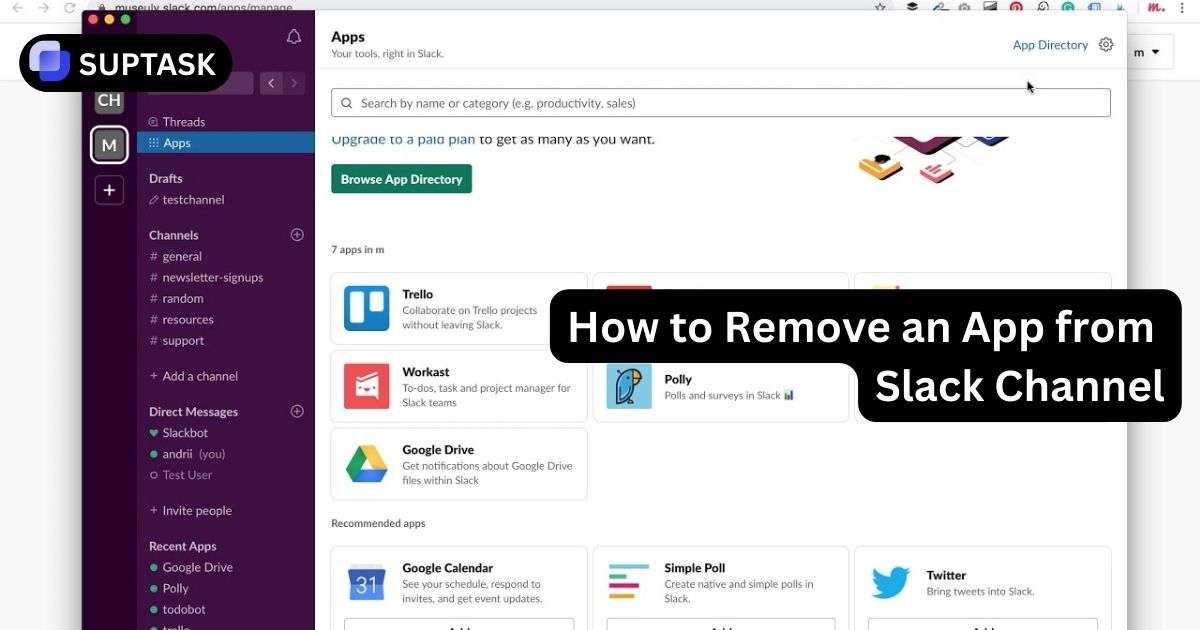Have you ever wondered how businesses can efficiently handle a large volume of customer inquiries while still providing prompt assistance? Well, the secret lies in support ticket systems. We'll explain what is a support ticket, their purpose, types and the best practices to increase efficiency and lower response rates.
Key Takeaways
Support tickets are essential tools for managing customer inquiries and enhancing the overall customer experience. Here's what you need to know:
- Support tickets are individual reference numbers assigned to customer inquiries, helping businesses effectively manage and resolve concerns.
- Customer service teams use these systems to organize, prioritize, and track customer requests.
- Key features of support ticket systems include: - Centralized communication - Efficient issue resolution - Performance tracking - Knowledge base creation
- Integrating support tickets with collaboration tools like Slack can significantly improve response times and team efficiency.
- An omnichannel approach ensures seamless communication across various platforms, enhancing customer satisfaction.
- Implementing automation, effective prioritization, and team collaboration can lead to faster ticket resolution.
Read on to discover how support tickets can revolutionize your customer service approach and boost customer satisfaction.
What Is a Support Ticket?

At its essence, a support ticket serves as a digital documentation of a user's inquiry, concern, request, or feedback. These tickets are generated when customers or internal team members encounter an issue that requires outside assistance to resolve.
Support tickets are essential for customer support teams. They provide a way to effectively organize and track customer requests, ultimately leading to improved customer satisfaction. It helps businesses efficiently manage, track, and resolve customer issues.
The main goal is to organize customer inquiries, prioritize problems, and improve the overall customer experience for the support team.
With Suptask you handle all your support tickets within Slack, simplifying ticket mangement for the entire organization. Try for free today!
The Purpose of Support Tickets
You may wonder, why do businesses use support tickets? Well, support tickets have a purpose - they help organize customer inquiries, prioritize problems, and ultimately improve the overall customer experience. When support tickets are categorized properly, customer service teams can assign them to the right department and address urgent issues promptly.
Implementing an efficient management approach for customer queries streamlines the support process and significantly improves customer satisfaction and loyalty.
Why do businesses use support tickets? Support tickets serve multiple purposes:
- Organizing customer inquiries
- Prioritizing problems
- Improving overall customer experience
Here are some key purposes of support tickets:
- Centralized Communication: Support tickets provide a central hub for all customer interactions.
- Efficient Issue Resolution: Support teams can manage their workload effectively by categorizing and prioritizing tickets.
- Performance Tracking: Ticketing systems allow businesses to monitor response times and resolution rates.
- Knowledge Base Creation: Recurring issues can be used to create comprehensive self-help resources.
Related: What is a ticketing system?
Support Ticket Systems: An Overview
Support ticket systems are centralized platforms that help manage customer inquiries and requests more efficiently. These systems allow customer service agents to effectively monitor and prioritize tickets, ensuring faster responses and an excellent customer experience.
Essentially, a customer support ticketing system is a software tool that customer support teams employ to:
- Organize
- Track
- Manage
- Prioritize
A good support ticket system should have the following features:
- User-friendly Interface: An intuitive dashboard for easy navigation and management.
- Automation Capabilities: Features like automatic ticket assignment and predefined responses.
- Reporting and Analytics: Tools to track key metrics and generate insights.
- Integration Options: Ability to integrate with other business tools like CRM systems.
See all the 21 requirements for a help desk system curated by our team.
Our company addresses customer demand by efficiently handling customer requests, thus enabling efficient issue resolution.
Why Integrate with Slack?
Slack, a widely used team collaboration tool, has become essential for many organizations due to its real-time messaging features. When combined with a support ticketing system like Suptask, teams can:
- Instant Notifications: Receive real-time updates on new tickets, status changes, and resolutions directly in Slack channels or private messages.
- Collaborative Problem Solving: Discuss ticket details in dedicated Slack threads, allowing for quicker brainstorming and problem resolution.
- Automated Workflows: Set up bots to automate routine tasks, such as assigning tickets to specific team members or updating ticket statuses.
- Centralized Communication: Keep all ticket-related discussions in one place, reducing the need to switch between multiple platforms.
The Suptask Advantage
Suptask transforms Slack into a ticketing system that stands out due to its user-friendly interface, robust features, and seamless integration capabilities. When combined with Slack, it provides:
- Easy Setup: Integrate Suptask with Slack in just a few clicks without the need for complex configurations.
- Enhanced Visibility: With Suptask's dashboard and Slack's notification system, always stay on top of pending, ongoing, and resolved tickets.
- Improved Response Times: By bridging the gap between communication and ticket management, teams can address issues faster, leading to happier customers and more efficient operations.
Try the Suptask free trial and experience a better work flow.
Omnichannel Approach
An omnichannel approach is a critical aspect of modern support ticket systems. By capturing customer messages from various channels such as:
- Sive chat
- Phone
- Social media
- Web forms
Support ticket systems ensure seamless communication and a consistent customer experience across all touchpoints.
This approach smoothens the transition of customers between channels without losing context, thereby enhancing customer satisfaction and loyalty.
Knowledge Base Integration
You can lower the number of support tickets you receive by incorporating a knowledge base into your ticket system. A knowledge base serves as a valuable resource that allows customers to find solutions to commonly asked questions about:
- Product availability
- Payment options
- Returns
- Shipping
According to a survey, a staggering 91% of customers expressed their willingness to utilize an online knowledge base that fulfills their search needs. This clearly highlights the strong preference for customizable content. By consistently updating the knowledge base, customer service agents can ensure that customers have access to precise and pertinent information, thereby significantly enhancing the overall customer experience.
Types of Support Tickets and Their Stages

For efficient problem resolution, support tickets can be classified based on their nature, such as:
- Technical
- Billing
- Sales
- HR
Such categorization aids agents in managing them effectively, speeding up the resolution process.
We will now examine each type of support ticket and their respective stages in detail.
Technical Support Tickets
Technical support tickets are crucial for addressing product or service issues and demand prompt attention. They serve as a communication channel between customers and support teams, allowing for the documentation and tracking of customer inquiries, complaints, and interactions with the support team. By effectively managing technical support tickets, support teams can ensure timely resolutions and uphold customer satisfaction.
The stages of a technical support ticket typically include:
- Ticket Creation
- Triage and Assignment
- Investigation
- Resolution
- Verification
- Closure
By implementing automation, prioritizing tickets effectively, and improving team collaboration, support ticket resolution can be expedited, ensuring timely assistance for customers.
Billing and Payment Support Tickets
Billing and payment support tickets involve financial transactions and should be handled professionally. The stages typically include:
- Ticket Creation
- Verification
- Investigation
- Resolution
- Communication
- Closure
Providing personalized customer support and keeping customers informed throughout the resolution process are crucial elements in effectively managing billing and payment support tickets.
Sales Support Tickets
Sales support tickets are designed to handle customer inquiries before a purchase and are directed to sales representatives. They help track and organize customer interactions related to sales, including:
- Product inquiries
- Pricing queries
- Order status updates
- Sales support requests
The stages of sales support tickets typically include:
- Ticket Creation
- Assignment
- Initial Response
- Information Gathering
- Proposal/Quote
- Follow-up
- Closure
Sales support tickets enable sales teams to deliver prompt and efficient customer support throughout the sales process, ultimately contributing to increased customer satisfaction and loyalty.
HR Support Tickets
When employees have concerns or questions related to their employment, they can submit HR support tickets. These tickets are then managed by HR teams using a specialized software platform called an HR ticketing system. This system helps HR departments keep track of and organize employee inquiries and communications.
The stages for HR support tickets typically include:
- Ticket Submission
- Categorization
- Assignment
- Investigation
- Resolution
- Communication
- Closure
When submitting an HR support ticket, it is important to include the employee's name, contact information, and a clear description of the inquiry. By personalizing customer support and providing regular updates, you can ensure that these tickets are managed effectively.
Conversations vs Support Tickets
Many companies opt for using the term "conversations" instead of "support tickets" to highlight the importance of human interactions rather than impersonal transactions. By framing customer interactions as conversations, companies aim to take a holistic approach considering various communication platforms and previous engagements. The focus is on building a connection with the customer and understanding their needs and preferences.
In contrast, support tickets are focused on operational tasks and involve actions to be taken to address the issue at hand. By including a detailed record of the customer's conversations in the ticket history, customer service representatives can gain a comprehensive understanding of the problem, allowing them to provide a more personalized and effective response.
Finding a balance between conversations and support tickets is crucial for providing excellent customer service and ensuring customer satisfaction.
Strategies for Faster Support Ticket Resolution
To resolve support tickets more efficiently, support teams can:
- Implement automation
- Prioritize tickets effectively
- Improve team collaboration
By utilizing these strategies, support teams can speed up the resolution process and ensure that customers receive timely assistance.
Implementing Automation
Help desk systems with automation features can greatly enhance efficiency and customer satisfaction. Auto-reply functions, for instance, are invaluable in assuring customers that their messages have been received and are being attended to promptly. By automating routine tasks and reducing response times, businesses can optimize their help desk operations and provide a smoother experience for their valued customers.
Here are some ways to implement automation:
- Automatic Ticket Routing
- Canned Responses
- Automated Follow-ups
- Chatbots
- Ticket Status Updates
Service desk softwares can free up customer service teams to concentrate on delivering personalized support and solving more intricate problems, thereby improving the overall customer experience.
Effective Ticket Prioritization
Prioritizing tickets effectively is crucial for promptly addressing urgent issues, which ultimately leads to improved customer satisfaction. By categorizing support tickets based on priority, customer service teams can more efficiently manage their workload and respond quickly to pressing matters.
Here's a suggested prioritization system:
- Critical
- High
- Medium
- Low
Streamlining the support process and enhancing customer satisfaction and loyalty, implementing an efficient management approach for customer queries is crucial.
Enhancing Team Collaboration
Collaboration tools are essential for facilitating teamwork, knowledge sharing, and efficient ticket resolution. Support ticket systems offer a range of collaboration features including internal chat, note sharing, and file/document sharing capabilities.
Strategies to enhance team collaboration include:
- Implementing Internal Chat
- Creating Knowledge Sharing Sessions
- Using Collaborative Notes
- Establishing Clear Escalation Paths
- Cross-training Team Members
- Implementing a Mentoring System
By using these tools, support teams can work together efficiently, share knowledge easily, and solve customer issues more quickly. This ultimately leads to increased customer satisfaction.
Measuring Support Ticket Performance

Tracking the performance of support tickets is crucial for improving customer service operations. By closely monitoring performance metrics, customer service teams can identify recurring issues and patterns, allowing them to make necessary adjustments and take proactive measures to address these issues before they escalate. This helps optimize overall customer service quality and satisfaction.
In this section, we will delve into important support ticket metrics and discuss how to use analytics to improve performance.
Essential Support Ticket Metrics
When it comes to support tickets, there are several key metrics that should be monitored. These include ticket volume, resolution time, and first response time. By keeping an eye on these metrics, valuable insights can be gained into the overall efficiency of customer service operations. Additionally, identifying areas for improvement becomes easier when these metrics are closely tracked.
Tracking these metrics allows customer service teams to make informed decisions regarding resource allocation, process optimization, and improving overall service quality.
Leveraging Analytics for Improvement
By analyzing data from support tickets, customer service teams can uncover trends, identify recurring issues, and find opportunities for process improvement. Utilizing analytics allows these teams to make informed decisions based on data, leading to optimized support processes and increased customer satisfaction.
To enhance customer service, it's crucial for teams to evaluate performance metrics and incorporate valuable customer feedback consistently. This approach enables them to identify specific areas that require improvement and implement successful strategies to tackle these challenges effectively.
Best Practices for Managing Support Tickets
To effectively manage support tickets, it's crucial to personalize customer support and provide continuous updates throughout the resolution process. By following these best practices, customer service teams can create a positive customer experience and cultivate lasting customer loyalty.
Personalizing Customer Support
Providing personalized support can significantly improve customer satisfaction and loyalty by addressing individual needs. When customer service teams use customer data to customize responses and deliver personalized experiences, it fosters a sense of loyalty, heightens satisfaction levels, and increases customer retention rates.
In addition, providing personalized support can reduce customer service expenses and improve overall efficiency in assisting customers.
FAQs
How do you manage support tickets?
To manage support tickets effectively, use a ticketing system prioritize issues, use automation for routine tasks, implement a clear workflow, train your team regularly, and utilize analytics to identify areas for improvement. Consistent communication with customers is also crucial.
What is the most important thing to include in a support ticket?
The most important elements to include in a support ticket are a clear description of the issue, relevant customer information, priority level, and any steps already taken to resolve the problem. This information helps support agents address the issue efficiently.
What is the customer support ticket handling process?
The customer support ticket handling process typically involves ticket creation, categorization, assignment to the appropriate team member, investigation of the issue, resolution implementation, communication with the customer, and finally, ticket closure after confirming customer satisfaction.
How to handle multiple support tickets?
To handle multiple support tickets efficiently, prioritize based on urgency and impact, use automation tools for routine tasks, implement a ticketing system with clear categorization, encourage team collaboration, and continuously monitor and adjust your processes based on performance metrics.
What are the benefits of using a support ticket system?
Using a support ticket system offers benefits such as improved organization of customer inquiries, efficient issue tracking and resolution, enhanced team collaboration, better performance monitoring, and the ability to build a knowledge base from recurring issues, ultimately leading to improved customer satisfaction.













